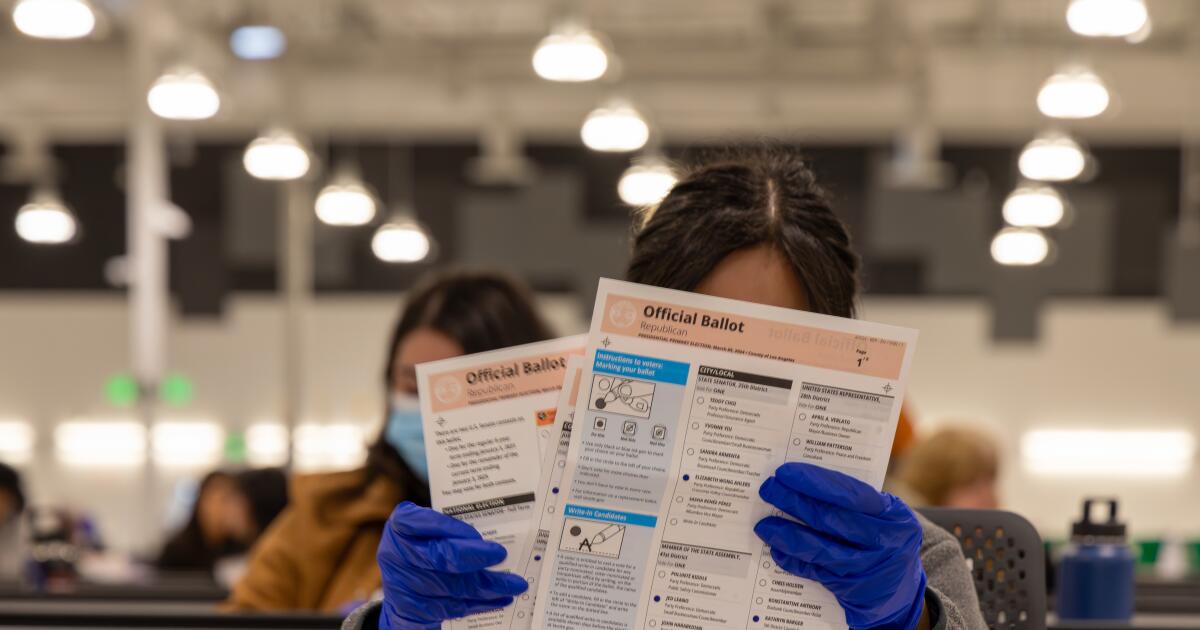California's surgeon general has unveiled a new initiative to reduce maternal mortality, setting a goal of halving the rate of pregnancy- and childbirth-related deaths by December 2026.
Health officials say more than 80% of maternal deaths nationwide are preventable. California has achieved a much lower rate of such deaths than the United States, but maternal mortality has surged in recent years amid the COVID-19 pandemic, state data show.
“We have the lowest rate in the country. We can do better now,” said Dr. Diana E. Ramos, California’s chief public health officer, in an interview.
Ramos was joined in announcing the effort Tuesday by first partner Jennifer Siebel Newsom, the wife of Gov. Gavin Newsom.
In California, the leading causes of these deaths include heart disease, bleeding, “behavioral health” issues such as mental illness and substance abuse, and infections. More than one-fifth of pregnancy-related deaths in California occur on the day of delivery, but most happen in the days, weeks and months afterward, according to state data.
The crisis has been especially hard on Black women, who have faced a maternal mortality rate three times that of white women in California. In Los Angeles County, there has been a public outcry in recent years over the deaths of women like April Valentine, 31, and Bridgette Burks, 32, Black mothers who left behind devastated families.
Health researchers have pointed to numerous factors as responsible for the higher maternal mortality rates among Black women, including the physical effects on the body of enduring years of racism; higher rates of diabetes and other chronic diseases that increase risk; and inequalities in the care Black patients receive.
California officials said they are also concerned about rising maternal mortality rates among Latino and Asian/Pacific Islander communities in the state.
According to officials, the “Strong Start & Beyond” initiative would help patients understand potential risks before they become pregnant and take earlier steps to address dangers such as heart disease. It would also alert Californians to doula services and other programs aimed at supporting people before, during and after childbirth.
Ramos said California had achieved the lowest maternal mortality rate in the country thanks to its maternal death review system and other efforts focused on hospitals, physicians and other health care professionals. Until now, “the focus has been primarily on the health care arena,” she said.
But “if we keep doing the same thing, focusing only on the health care team, we’re going to get the same results,” Ramos said. Health officials and experts decided that work needed to be strengthened, “and that’s why we’re bringing the patient on board.”
“It seems so simple, but many times the pregnant person does not feel that they have a voice or the information they need to make informed decisions,” Ramos said.
U.S. Health and Human Services Secretary Xavier Becerra said in a statement accompanying the launch of the new initiative that “reducing maternal mortality is not a ‘must,’ it is a ‘must.’ California gets that.”
Planned strategies outlined in California's Maternal Health Plan, released Tuesday, include a new questionnaire that patients can complete at home to assess their risk for pregnancy complications and get recommendations on next steps based on their results.
As an obstetrician-gynecologist, Ramos said she found that often at the first prenatal appointment, patients would hear for the first time, “You’re going to be a high-risk patient.” And more often than not, patients would say, “I wish I knew what I could have done X, Y or Z to lower my risk.”
California officials also want all medical facilities in the state to use an existing screening tool to measure the risk levels of pregnant patients.
Ramos said those results could help guide where patients go to give birth. Hospitals with limited resources could refer patients at higher risk of complications — such as someone who “is going to be at risk of bleeding or being admitted to the ICU” — to medical centers better equipped to care for them.
The new effort comes at a time when pregnant patients may face fewer options for hospital births: Nationally, about 1 in 25 obstetric units closed in 2021 and 2022, according to a March of Dimes report.
In “the modern fee-for-service model of health care … hospitals must fund around-the-clock capacity but are only reimbursed when their facilities and staff are in action,” wrote Dr. Anna Reinert, an assistant professor of clinical obstetrics and gynecology at the Keck School of Medicine of USC, in a recent opinion piece.
“Therefore, if not enough deliveries are performed, expenses outweigh reimbursement. This leads hospitals to get out of the delivery business altogether,” Reinert wrote.
California has faced a wave of such closures over the past decade, including at many hospitals in Los Angeles County. A CalMatters analysis found that such closures had disproportionately affected Black, Latino and low-income communities. Among the latest hospitals to announce they would close a birthing unit is USC Verdugo Hills Hospital in Glendale, which plans to discontinue maternity care on Nov. 20.












